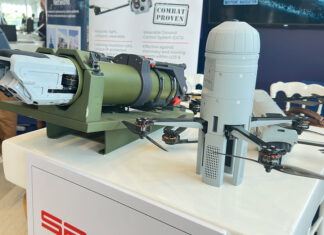The conflict in Ukraine has served as a real-world laboratory for NAVWAR tactics and technologies. Both Russian and Ukrainian forces extensively deployed a variety of jammers and spoofers, demonstrating the critical role of electronic warfare in modern conflict.
Overall, the performance of US-delivered GPS-guided weaponry, such as the Excalibur 155mm artillery rounds, M31 Guided MLRS rockets, and JDAM GPS-guided bombs, has been degraded since their initial successful introduction by the Ukrainian forces. Apparently, the Russians gradually developed EW countermeasures against those threats. Due to operational security considerations, the absence of countermeasures, such as the SAASM anti-spoofing and M-Code anti-jam support for these weapons, may have degraded their resilience, facing an extensive and sophisticated Russian EW. Other weapon systems, such as the Storm Shadow and SCALP cruise missiles, fared better over time as they rely on multiple navigation means and have fared better in prolonged combat.

During the 2023 summer counteroffensive, Ukraine used tens of thousands of small drones to strike Russian positions and vehicles, many of which failed to launch due to the extensive jamming employed by the Russians. This required the Ukrainians to disable many GNSS-based automation and degrade their drones to rely on visual navigation and control, which is also vulnerable to jamming and comm-loss. Such systems have impacted military operations and civilian sectors, underscoring the dual-use dilemma inherent in NAVWAR.
Both sides currently use Counter-drone and GNSS jammers in the Russo-Ukraine conflict. Some Russian armored vehicles employ the Volnorez EW system, using two emitters positioned in the front of the turret; the system covers 360 degrees and is designed to engage FPV attack drones. The system covers a range of 900 to 2000 MHz and disrupts drone signals at distances exceeding 600 meters. However, based on captured systems studies, Volnorez’s lack of continuous coverage may compromise its combat effectiveness. Other applications employ GNSS commercial jammers like the Saniya EW system, which is effective at a distance of 1,000 meters. The system can detect drones at 1,500 m’ distance and be used against attack and recce drones. The Ukrainian side also uses EW systems to defend its combat vehicles. The Piranha AVD360 creates a protective ‘electronic dome’ blocking communications and navigation signals to reach the attacking drone within 600 meters of the protected vehicle.
To address these countermeasures and enable the FPV drones to maintain combat effectiveness, more sophisticated navigation and targeting systems are employed; these include applying machine vision to enable drones to take control and pursue the attack, relying on autonomous image recognition via the camera when there is datalink loss.

GNSS Spoofers Protecting High-End Targets
Sophisticated spoofers take NAVWAR to a higher level of complexity and deception. Unlike jammers, spoofers emit signals that mimic GNSS signals, misleading receivers with false positioning or timing data.
Spoofing was considered rare until recently. It is not always possible to distinguish jamming from spoofing or to determine who is behind the interference. The worst-affected regions include the aerial space above the Black Sea area from Turkey to Azerbaijan, the Mediterranean Sea extending from Cyprus to Libya, the Baltic Sea near Poland and Latvia, and the Arctic near Finland and Norway. Israel alerted pilots in mid-October it had restricted GPS in the region and warned pilots not to rely on satellite navigation systems for landing. The GNSS interference has been felt up to 190 miles away from battle zones and “appears to go well beyond simple military mission effectiveness,” according to Eurocontrol, Europe’s primary air traffic control manager.
Spoofing causes more problems for GNSS users. In some attacks, a spoofer disguises its transmissions as a true satellite by recording a genuine satellite signal and rebroadcasting it with amplification or a delay to disguise it as an authentic signal, thus deceiving the receiver into plotting a bogus location.
The Ring, developed by Regulus Cyber, represents a cutting-edge spoofing approach capable of generating highly convincing false GNSS signals to mislead sophisticated GNSS receivers. Ring targets the platform’s basic navigation subsystem commands set by feeding it with false satellite data that triggers a reaction in a certain way, such as fend off, stop and hover, or descend abruptly and crash. Unlike large, strategic spoofing systems, Ring was designed as a tactical system; at a weight of 6.5 kg, it can be installed on a vessel, armored vehicle, artillery piece, or air defense system, fed by the vehicle’s power or battery powered, carried in a backpack for dismounted operation. The system creates a defensive hemispheric shield around the protected platform that ‘fends off’ drones and other threats employing GNSS navigation systems. This hemispheric ‘bubble’ is effective against drones and other threats that rely on GNSS for navigation. According to the developers, the system can mitigate all such threats, regardless of their operating and guidance system, protocols, and countermeasures.






















